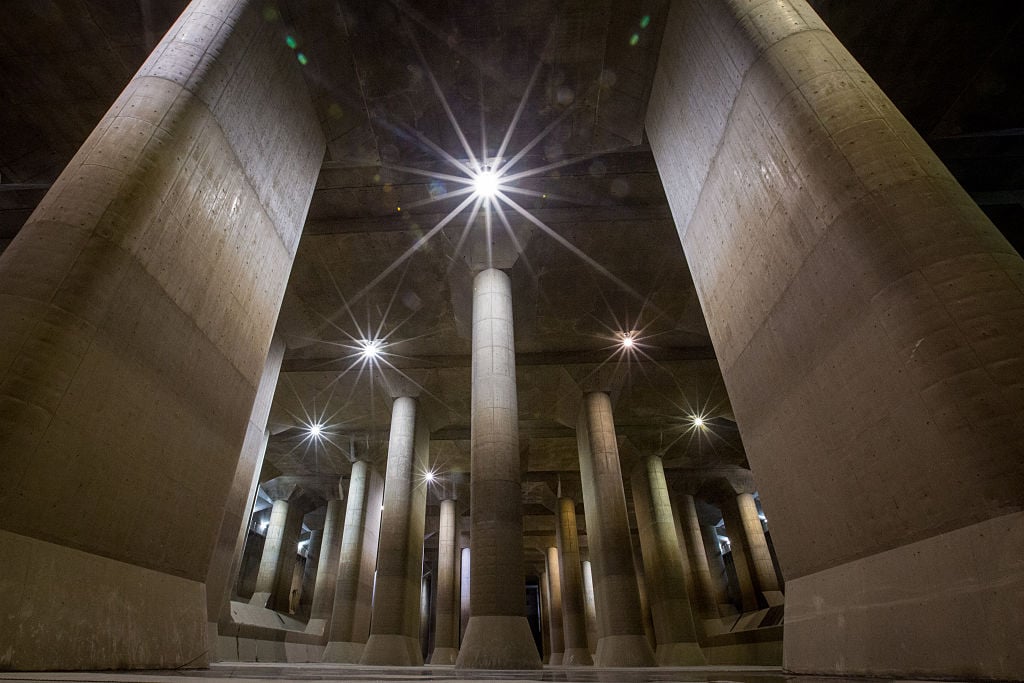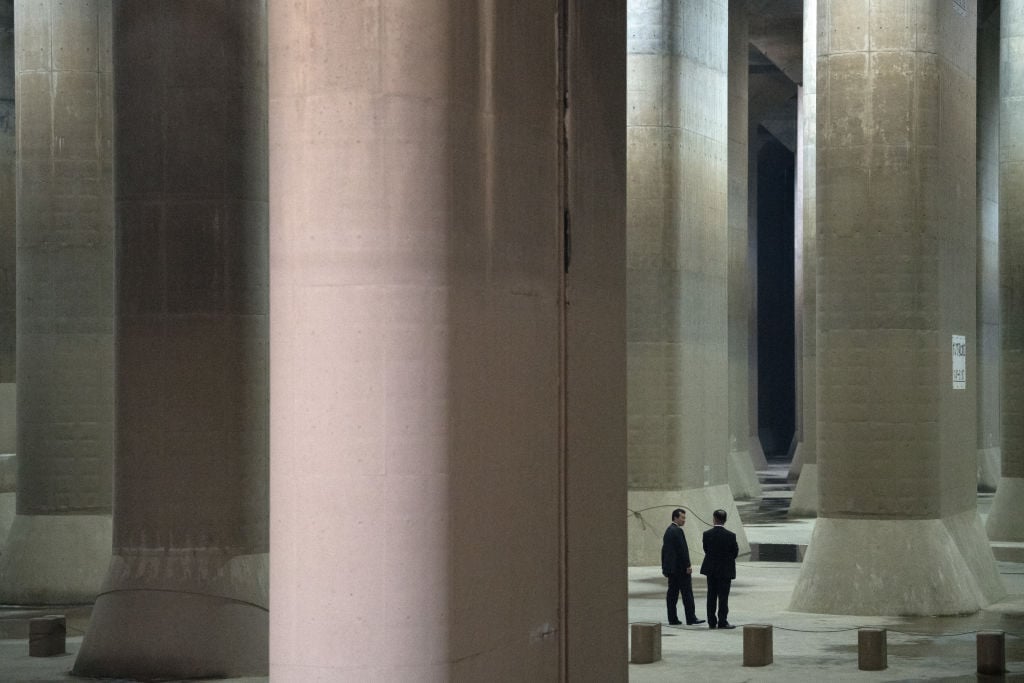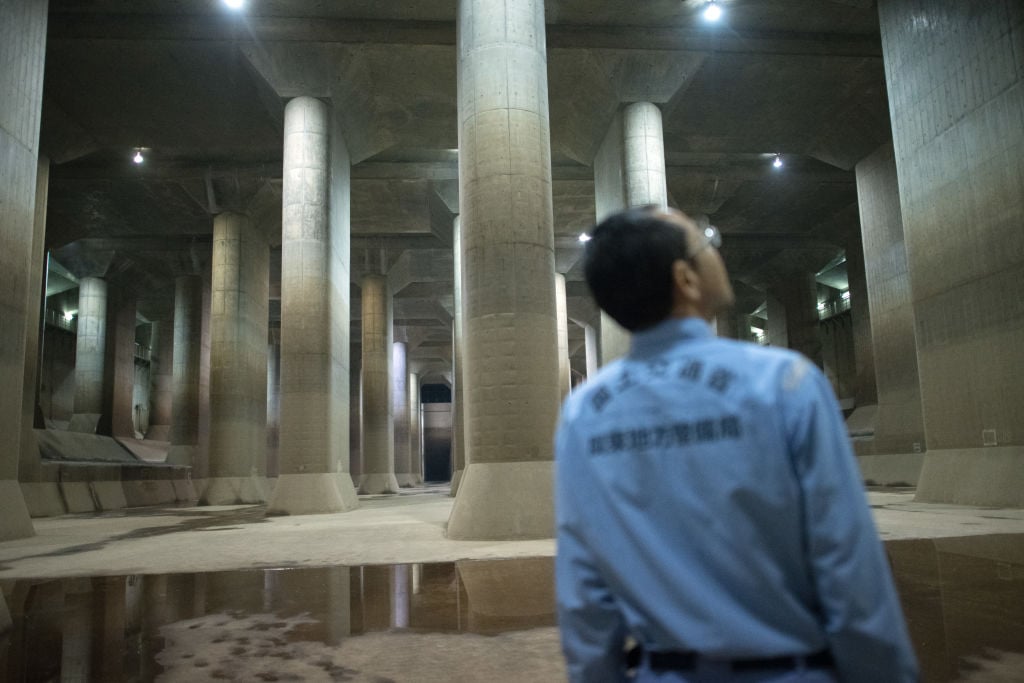Tokyo has long had to contend with flooding. The Japanese capital’s location on a shallow bay and atop a series of rivers leaves it particularly susceptible when extreme weather hits.
A remarkable engineering project, completed over 17 years, is combatting this. What is the world’s largest storm drain – which you can visit yourself from the suburb of Saitama – has provided Tokyo with the premier flood-prevention facility.

In the city of Kasukabe, to the north of the Greater Tokyo Area, is a hidden underworld that looks like something out of Blade Runner. Towering concrete beams stretch hundreds of feet in the air, a combination of silos, storage tanks and pillars comprising one of the world’s best sewer systems. It is also rather beautiful.
READ: Inside London’s Super Sewer | The mammoth new tunnel under the River Thames
It is known as the G-Cans (or also by the slightly less glamorous name: Metropolitan Area Outer Underground Discharge Channel) and it maintains water levels in the Naka River drainage basin. Work on the project began in 1992 and by the time it was completed in 2009, it was the world’s largest underground floodwater diversion facility.

The various parts of the G-Cans are connected by a primary four-mile tunnel built 165 feet underground and supported by 59 beams. It collects overflow from the various rivers and deposits in the less susceptible Edo (or Edogawa) River.
In total it consists of five containment silos, measuring 213 x 105 ft. They are connected together by 40 miles of total tunnel, as well as a primary water containment tank measuring 580 x 256 x 83 feet.

By 2014, the G-Cans had successfully reduced flood devastation a reported 85 times. The highest volume came in August 2008, when it displaced 414 million cubic feet of flood water. If that is an incomprehensible number for you, as it is for us, it’s the equivalent of nearly 5,000 full Olympic swimming pools worth of water – or 11.5 billion liters. It’s a lot of water. The water is displaced by pumps, made from modified turbines, that can churn up to 200 metric tons of water into the Edo River every second.
There are two kinds of tours. The first costs 1,000 yen and is an hour-long tour of the ‘Underground Temple’. A more advanced and expensive option (3,000 yen) is called the Shaft Course, and lets you walk across the catwalk around one of the drains itself.





